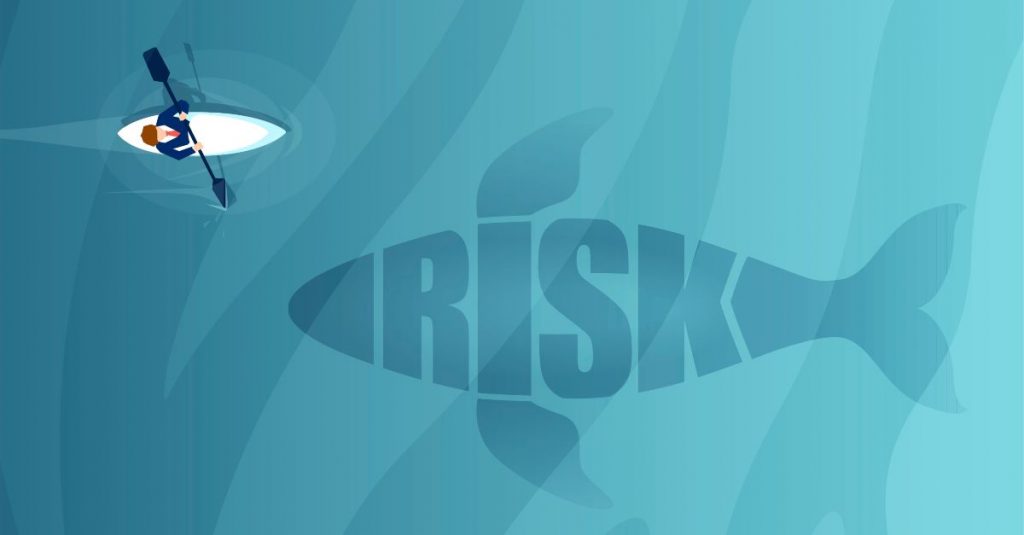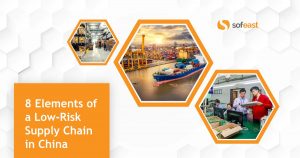Last year, I wrote about the Business Continuity Plan (BCP). More and more companies request their suppliers to prepare a BCP, as a structured approach to performing a supply chain risk analysis to get prepared for the risks they are exposed to.
If you haven’t revised your BCP in 2020 and 2021, you have probably been caught off guard by recent events. But the question everyone is wondering is, ‘can we even forecast what is going to happen?’
Two serious supply chain crunches that were not predicted
The COVID 19 pandemic has had an immediate impact. People can no longer travel freely, some areas in China were in complete lockdown and their factories were unable to produce for some time, and so on. The pandemic has also set off more complex imbalances that are going to hurt many companies for a while.
The first one is the forecast of a lower need for cargo space in 2021, while demand actually soared. We are still unsure what all the factors at play are, but the result is clear: it is harder and much more expensive to ship products. International logistics is a mess, and the situation doesn’t seem to be getting better.
To make the whole situation even worse, the Suez Canal is currently blocked. And it might not be cleared for weeks. Tens of vessels are idle, waiting by. Just when we needed that.
The second one is the shortage of advanced microprocessors. Based on what I read, this is also related to very low forecasts of demand by automakers, among others.
Top producers like TSMC in Taiwan and Samsung in South Korea didn’t invest in a lot of extra capacity, and that was the rational thing for them to do. At the same time, a lot of electronic products’ volumes went up, as people equipped their home offices. There is now a serious shortage, and most carmakers are planning to make fewer cars because of that.
Again, just when the World needed that, the manufacturing plant of a semiconductor supplier in Japan recently burned.
What might hit your supply chain in the coming years?
Economies have gotten more and more interconnected. A blow in one place can have a long-lasting and costly impact on other aspects of the economy.
And I haven’t heard of a mathematical model that predicted correctly what would happen to international logistics or to high-end chips this year. So, don’t count on models.
Our problem in 2021 is low-probability events that come up and strike us. Unfortunately, we tend to be very bad at planning for low-probability events, as Nassim Nicholas Taleb points out in his books.
Now, the exercise of planning for those risks by doing a supply chain risk analysis is a good thing. It can open your company executives’ eyes to the need to make your supply chain more robust and drive a plan to relocate a part of your supply chain, to work with a key supplier on a disaster recovery plan, etc.
So, think of certain issues that are widely considered possible but not probable, among which could be:
- A strong clash between two countries: China and the US, China and Japan, etc.
- Terrorists seize a ship carrying several containers of your products.
- A strong earthquake and/or a tsunami hits one of your suppliers or sub-suppliers.
- The US Congress and Senate take a much stronger stance and give US importers 18 months to buy 100% of their products outside of China.
To make the exercise entertaining, and if that’s consistent with your company culture, you can also add a few goofy scenarios. For instance, aliens invade the US (based on Hollywood movies, that’s where they tend to attack), or King Kong kidnaps your entire leadership team for a month.
******
I hope this helps companies put supply chain risk management at the center of their strategies, at least on equal footing with the imperative to “cost optimize”. Because, in the end, when things go wrong and you are very exposed, it ends up being quite costly.
Keep reading more about supply chain risk management
You can read more posts about supply chain risk management here on the blog:
- Supply Chain Risk Management, Part 1: What are VUCA and Black Swans?
- Supply Chain Risk Management, Part 2: The Business Continuity Plan
- Supply Chain Risk Management, Part 3: A Purchaser Supply Chain KPI Scorecard’s Benefits
- Supply Chain Risk Management, Part 4: How Much Inventory Do You Need?
- Supply Chain Risk Management, Part 5: Moving Manufacturing to Vietnam, Thailand, Malaysia, or India (Pros & Cons)
8 Elements of a Low-Risk Supply Chain in China
This FREE webinar will empower you to transform your supply chain in China to reduce risks. Two industry experts, Renaud Anjoran and Paul Adams from Sofeast, talk you through how to gain control over your product’s quality, on-time shipments, long-term pricing stability, and continuity of supply.
Ready to watch? Register by hitting the button below:


